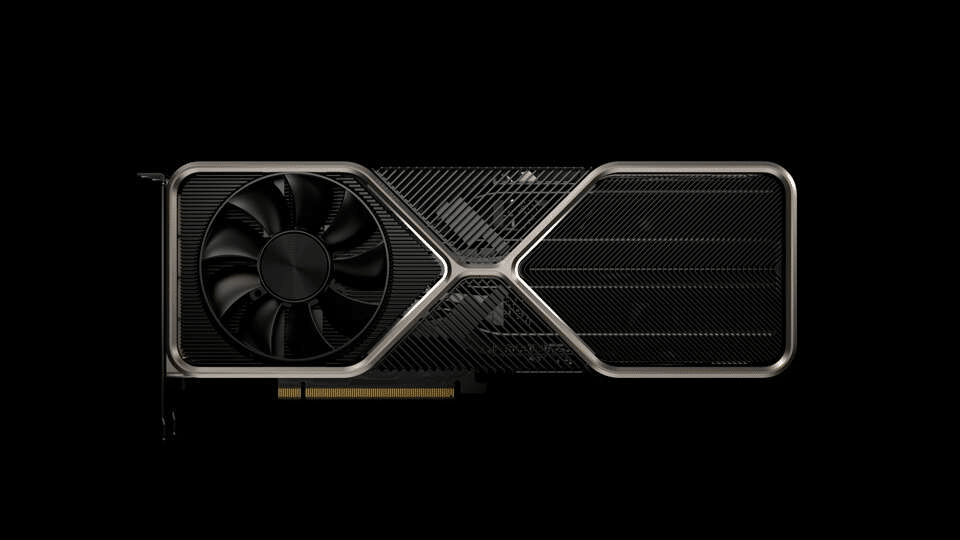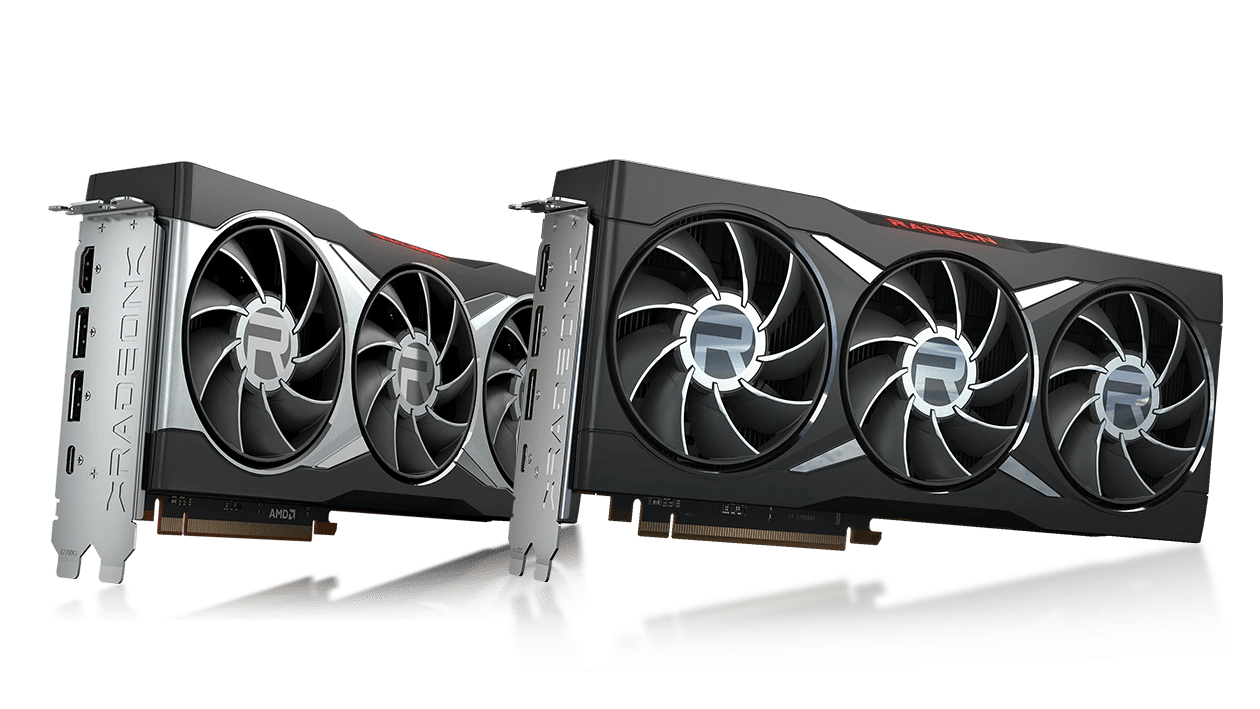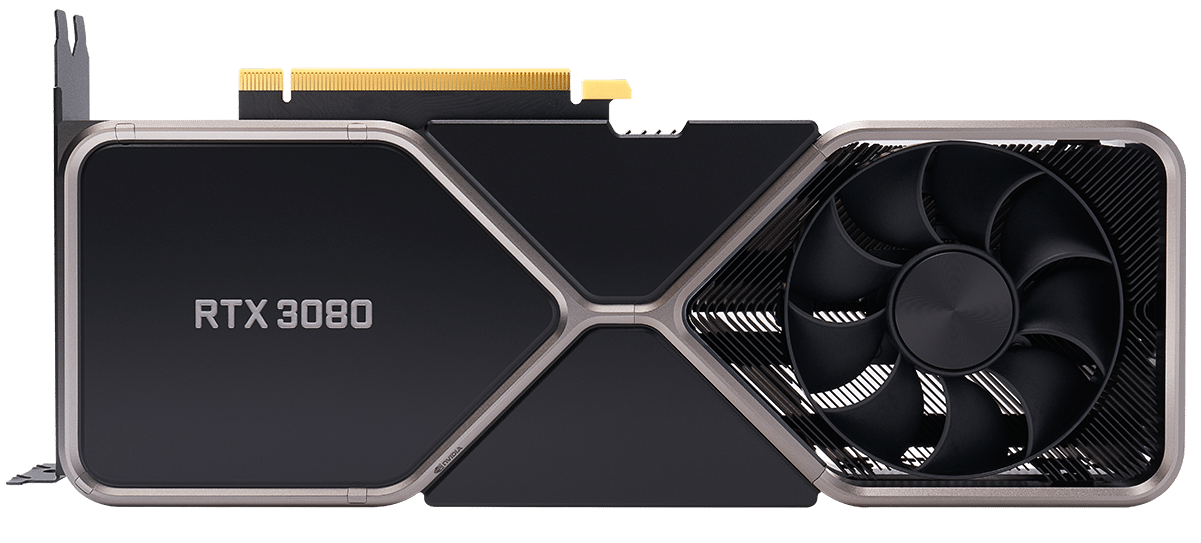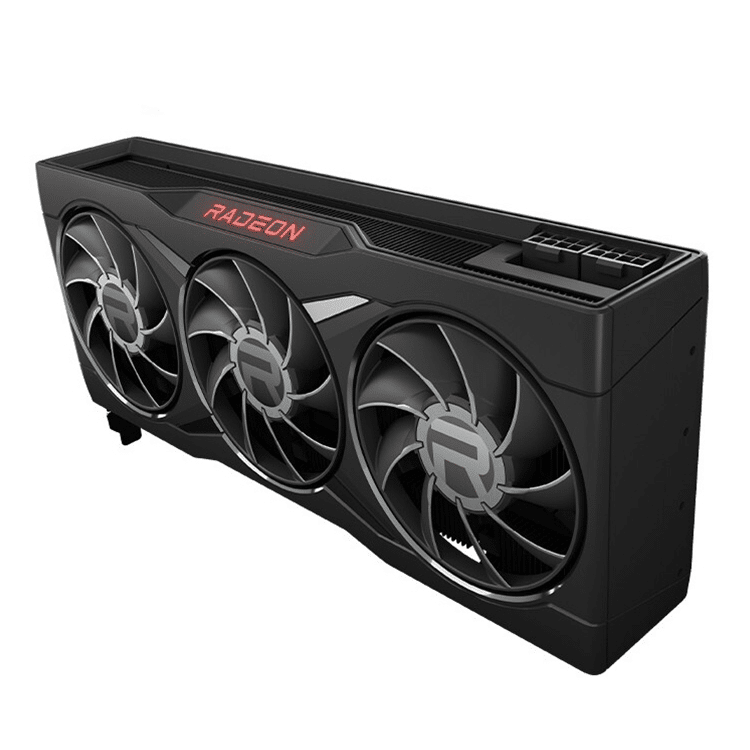Nvidia GeForce vs. AMD Radeon GPUs offers high-performing models for gamers. However, the choice between the two ultimately comes down to personal preference and the features that are most important to you.
When it comes to gaming, having a powerful graphics card is essential for smooth, high-resolution gameplay.
Nvidia GeForce and AMD Radeon GPUs are two of the most popular options on the market. Both offer a range of models at different price points, but which is the best choice for you?
Nvidia GeForce

Nvidia GeForce is a line of graphics cards produced by Nvidia Corporation. They are known for their high performance and support for advanced features such as ray tracing and AI-based technologies. Nvidia’s flagship line, the RTX series, is trendy among gamers.
The RTX series, which was first introduced in 2018, offers support for ray tracing technology. Ray tracing is a rendering technique that simulates how light behaves in the real world, resulting in highly realistic graphics.
This technology benefits games with realistic lighting, reflections, and shadows. The RTX series also supports AI-based technologies, such as DLSS (Deep Learning Super Sampling), which improves performance by using AI algorithms to upscale images.
In addition to the RTX series, Nvidia offers a range of other graphics card options, including the GTX and Titan. The GTX series is a more budget-friendly option that still offers strong performance.
In contrast, the Titan series is geared towards professionals and enthusiasts who require the highest performance levels.
Nvidia’s graphics cards also come with a range of software features, such as Nvidia G-Sync, which helps reduce screen tearing and stuttering, and Nvidia Ansel, which allows for advanced in-game photography.
Related Reading
- How to Safely Overclock Your NVIDIA Geforce GTX 1080 Ti Graphics Card – All in One Overclocking Guide!
- All You Need to Know About NVIDIA GeForce GTX 1080 Power Consumption
- Everything About Upcoming NVIDIA GeForce RTX 4000 Series Release Date, Price, Specs, and Much More
- How To Open GeForce Experience NVIDIA Game Filter? Customize Your Game With Freestyle
AMD Radeon
AMD Radeon is a line of graphics cards produced by Advanced Micro Devices (AMD). They are known for their performance-to-price solid ratio and support for technologies such as FreeSync, which helps reduce screen tearing and stuttering.
The Radeon RX series is popular among budget-conscious gamers.

One of the main advantages of AMD Radeon graphics cards is their performance-to-price solid ratio. While they may not offer the same level of performance as the highest-end Nvidia cards, they are often significantly less expensive.
Another critical feature of AMD Radeon graphics cards is support for FreeSync technology. FreeSync is a variable refresh rate technology that helps reduce screen tearing and stuttering by syncing the monitor’s refresh rate with the GPU’s frame rate.
This can result in a smoother, more fluid gaming experience.
In addition to the Radeon RX series, AMD also offers a range of other graphics card options, including the Radeon Pro series for professionals and the Radeon Instinct series for machine learning and AI workloads.
Related Reading
- How To Enable/Disable AMD virtualization in BIOS?
- How to Overclock AMD Radeon R9 380?
- How to Reset AMD Radeon Software? Easy Way to Factory Reset AMD Driver
- What is AMD Enhanced Sync And How to Enable it for Butter-Smooth Gaming?
Nvidia GeForce vs. AMD Radeon
There are vital factors to consider when comparing Nvidia GeForce and AMD Radeon GPUs. Performance is one of the most important, and both lines offer high-performing models. However, Nvidia’s RTX series is generally more robust.
Another critical factor is price. AMD Radeon GPUs are more budget-friendly than Nvidia GeForce GPUs. For example, the AMD Radeon RX 6800 XT is priced at around $649, while the Nvidia GeForce RTX 3080 is priced at around $699.
Finally, it’s worth considering which features are most important to you. Nvidia GeForce is the better choice if you’re looking for advanced technologies like ray tracing and AI-based features.
If you’re more concerned with price and reducing screen tearing and stuttering, AMD Radeon may be the way forward.
Regarding software features, Nvidia GeForce offers a range of options, such as Nvidia G-Sync and Nvidia Ansel, while AMD Radeon has support for FreeSync technology. Both lines also offer software suites for monitoring and overclocking, but Nvidia’s GeForce Experience is generally considered more comprehensive and user-friendly.
Workstation/Professional Market: AMD vs. Nvidia
AMD and Nvidia offer powerful graphics card options for the workstation and professional market. However, some critical differences between the two may make one more suitable for specific workloads.
One of the main differences is the type of memory they use. AMD graphics cards typically use high-bandwidth memory (HBM), while Nvidia graphics cards use GDDR memory.
HBM is known for its higher memory bandwidth and power efficiency, making it well-suited for workloads that require large amounts of memory, such as 3D rendering and scientific simulations.

On the other hand, GDDR memory is generally less expensive. It offers higher memory capacities, making it well-suited for workloads that don’t require as much memory, such as video editing and machine learning.
Another difference between the two is the type of computing units they use. AMD graphics cards use stream processors, while Nvidia graphics cards use CUDA cores.
Stream processors are designed to handle a wide range of workloads, while CUDA cores are optimized for specific workloads such as deep learning and scientific simulations.
In terms of software features, both AMD and Nvidia offer professional driver suites. Still, Nvidia’s Quadro driver suite is generally more mature and stable, with better support for professional applications such as AutoCAD and SolidWorks.
Finally, regarding price, AMD graphics cards are generally more affordable than their Nvidia counterparts, making them a more budget-friendly option for workstations and professional use.

AMD and Nvidia offer powerful graphics card options for the workstation and professional market. However, the choice between the two ultimately comes down to the features and capabilities most important for your specific workloads.
AMD’s graphics cards are typically more affordable and well-suited for workloads that require large amounts of memory. In contrast, Nvidia’s graphics cards offer more specialized compute units and better software support, making them well-suited for specific workloads such as deep learning and scientific simulations.
Also, Read
- How to Reset AMD Radeon Software? Easy Way to Factory Reset AMD Driver
- Unable To Install NVIDIA Drivers on Windows 10! 5 Ways To Fix it
AMD Radeon vs. Nvidia GeForce in 2023
In 2023, the competition between AMD Radeon and Nvidia GeForce graphics cards is expected to be intense as both companies release new and improved models.
One of the main areas of competition is in the area of ray tracing technology. Ray tracing is a rendering technique that creates more realistic lighting and shadows in games.
Nvidia has been a leader in this area, with its RTX series graphics cards being the first to support hardware-accelerated ray tracing. AMD has announced plans to introduce ray tracing support with its RDNA 2 architecture.
This will make it possible for AMD graphics cards to compete with Nvidia’s RTX series regarding ray tracing performance.
Another area of the competition is in the area of AI-based technologies. Both companies invest in AI-based technologies such as deep learning and neural networks.
Nvidia has been a leader in this area, with its CUDA cores optimized explicitly for deep learning workloads.
On the other hand, AMD has been focusing on developing its ROCm software platform, which allows for easy deployment of machine learning workloads across multiple GPUs.
In terms of gaming performance, both companies are expected to release new high-performing models that will offer competitive frame rates at high resolutions and high-refresh-rate displays.
The pricing of the graphics card is also an important consideration. Nvidia’s RTX series graphics cards are generally more expensive than the equivalent AMD Radeon models. However, AMD’s Radeon RX series is generally considered to be more budget-friendly.
In conclusion, the competition between AMD Radeon and Nvidia GeForce graphics cards in 2023 is expected to be intense. Both companies are expected to release new, improved models with competitive performance and advanced features.
While Nvidia has a lead in ray tracing technology and AI-based technologies, AMD is expected to catch up with its RDNA 2 architecture and ROCm software platform. Both companies are expected to release new high-performing models in terms of gaming performance.
And AMD will continue to be a more budget-friendly option for most consumers.
Compare and contrast: Nvidia and AMD GPU Rendering Performance Measurements.
Regarding GPU rendering, both Nvidia and AMD offer powerful graphics card options.
However, benchmarks have shown that Nvidia’s RTX series graphics cards tend to perform better in GPU rendering tasks, mainly when using CUDA-accelerated software such as OctaneRender and Redshift.
For example, in a benchmark test using OctaneRender, the Nvidia RTX 3090 achieved a rendering performance of approximately 200 samples per second.
In comparison, the AMD Radeon Pro W5700 achieved a performance of approximately 150 samples per second. This shows that the Nvidia RTX 3090 has a significant performance advantage over the AMD Radeon Pro W5700 in GPU rendering tasks.
In another benchmark test using Redshift, the Nvidia RTX 3090 achieved a rendering performance of approximately 60 frames per second. In comparison, the AMD Radeon Pro W5700 achieved a performance of approximately 45 frames per second.
This again illustrates that the Nvidia RTX 3090 has a significant performance advantage over the AMD Radeon Pro W5700 in GPU rendering tasks.
It is important to note that these benchmark results are based on specific software and specific models of graphics cards and may not be representative of the performance of other models or software.
However, these tests demonstrate that Nvidia’s RTX series graphics cards tend to perform better in GPU rendering tasks when using CUDA-accelerated software.
OpenCL-accelerated software’s performance may differ, and the AMD Radeon Pro series graphics cards tend to perform well. If you use OpenCL-accelerated software, AMD’s Radeon Pro series graphics cards may be more suitable for your GPU rendering needs.
Comparison between Nvidia and AMD 3D Modeling Benchmarks
Regarding 3D modeling, both Nvidia and AMD offer powerful graphics card options.
However, benchmarks have shown that Nvidia’s RTX series graphics cards tend to perform better in 3D modeling tasks, mainly when using CUDA-accelerated software such as Autodesk Maya and 3ds Max.
For example, in a benchmark test using Autodesk Maya, the Nvidia RTX 3090 achieved a performance of approximately 12 million vertices per second.
In comparison, the AMD Radeon Pro W5700 achieved a performance of approximately 8 million vertices per second. This shows that the Nvidia RTX 3090 has a significant performance advantage over the AMD Radeon Pro W5700 in 3D modeling tasks using Maya.
In another benchmark test using 3ds Max, the Nvidia RTX 3090 achieved a performance of approximately 3.5 million vertices per second.
In comparison, the AMD Radeon Pro W5700 achieved a performance of approximately 2.5 million vertices per second. This again illustrates that the Nvidia RTX 3090 has a significant performance advantage over the AMD Radeon Pro W5700 in 3D modeling tasks using 3ds Max.
It is important to note that these benchmark results are based on specific software and specific models of graphics cards and may not represent the performance of other models or software.
However, these tests demonstrate that Nvidia’s RTX series graphics cards tend to perform better in 3D modeling tasks when using CUDA-accelerated software.
As with GPU rendering, it’s also worth noting that when using OpenCL-accelerated software, the performance may be different, and the AMD Radeon Pro series graphics cards tend to perform well.
If you use OpenCL-accelerated software, AMD’s Radeon Pro series graphics cards may be more suitable for your 3D modeling needs.
Standards for Video Editing Workstations.
Regarding video editing, both Nvidia and AMD offer powerful graphics card options.
However, benchmarks have shown that Nvidia’s RTX series graphics cards tend to perform better in video editing tasks, mainly when using CUDA-accelerated software such as Adobe Premiere Pro and DaVinci Resolve.
For example, in a benchmark test using Adobe Premiere Pro, the Nvidia RTX 3090 achieved a performance of approximately 90 frames per second.
In comparison, the AMD Radeon Pro W5700 achieved a performance of approximately 80 frames per second. This shows that the Nvidia RTX 3090 has a slight performance advantage over the AMD Radeon Pro W5700 in video editing tasks using Adobe Premiere Pro.
In another benchmark test using DaVinci Resolve, the Nvidia RTX 3090 achieved a performance of approximately 70 frames per second.
In comparison, the AMD Radeon Pro W5700 achieved a performance of approximately 60 frames per second. This again illustrates that the Nvidia RTX 3090 has a slight performance advantage over the AMD Radeon Pro W5700 in video editing tasks using DaVinci Resolve.
It is important to note that these benchmark results are based on specific software and specific models of graphics cards and may not represent the performance of other models or software.
However, these tests demonstrate that Nvidia’s RTX series graphics cards tend to perform better in video editing tasks when using CUDA-accelerated software.
The performance of OpenCL-accelerated software may differ, and the AMD Radeon Pro series graphics cards tend to perform well.
If you use OpenCL-accelerated software, AMD’s Radeon Pro series graphics cards may be more suitable for your video editing needs.
The video editing task’s performance also depends on CPU and RAM. So, it’s essential to have a balance between the GPU, CPU, and RAM in a workstation to achieve optimal performance.
What Workstation Graphics Card Should You Buy in 2023? Nvidia or AMD?
When it comes to choosing the best graphics card for a workstation, it ultimately depends on the specific needs and requirements of the user.
Both Nvidia and AMD offer powerful graphics card options that can meet the demands of various workstation tasks, such as 3D modeling, video editing, and GPU rendering.
Regarding 3D modeling and GPU rendering, Nvidia’s RTX series graphics cards perform better using CUDA-accelerated software. On the other hand, when using OpenCL-accelerated software, AMD’s Radeon Pro series graphics cards perform well.
Both Nvidia and AMD offer powerful graphics card options for video editing, but Nvidia’s RTX series graphics cards tend to have a slight performance advantage when using CUDA-accelerated software.
Regarding the professional market, Nvidia’s Quadro series graphics cards are optimized for professional workflows and applications such as AutoCAD, SolidWorks, and CATIA.
In contrast, AMD’s Radeon Pro graphics cards are optimized for open-source and video editing workflows.
It’s also worth noting that both Nvidia and AMD offer support for ray tracing, a feature that can be used for tasks such as 3D rendering, and AI-accelerated features that can be used for tasks such as video editing and 3D modeling.
The best choice for a workstation in 2023 depends on the specific needs and requirements of the user. It’s essential to consider the software and workflow used, as well as the performance and features of the graphics card.
Both Nvidia and AMD offer powerful graphics card options that can meet the demands of various workstation tasks, and it’s essential to choose the one that is best suited for your needs.
Conclusion
In conclusion, both Nvidia GeForce and AMD Radeon GPUs offer high-performing models for gamers. However, the choice between the two ultimately comes down to personal preference and the features that are most important to you.
Nvidia GeForce is the better choice if you’re looking for advanced technologies like ray tracing and AI-based features. If you’re more concerned with price and reducing screen tearing and stuttering, AMD Radeon may be the way forward.
Both lines also offer software suites for monitoring and overclocking, but Nvidia’s GeForce Experience is generally considered more comprehensive and user-friendly. Ultimately, both Nvidia GeForce and AMD Radeon are great options, and the best choice will depend on your individual needs and preferences.
Frequently Asked Questions
Which is better, Nvidia GeForce or AMD Radeon?
Nvidia GeForce and AMD Radeon GPUs offer high-performing gaming models. However, the choice between the two ultimately comes down to personal preference and the features that are most important to you.
Nvidia GeForce is the better choice if you’re looking for advanced technologies like ray tracing and AI-based features. If you’re more concerned with price and reducing screen tearing and stuttering, AMD Radeon may be the way forward.
Is Nvidia better for gaming?
Nvidia GeForce is known for its high performance and support for advanced features such as ray tracing and AI-based technologies.
These are particularly useful for games that feature realistic lighting, reflections, and shadows. However, both Nvidia and AMD offer a range of high-performing models for gaming.
Does AMD Radeon support ray tracing?
AMD’s Radeon graphics cards do not support ray tracing technology. However, AMD has announced plans to introduce ray-tracing support.
What is the difference between Nvidia G-Sync and AMD FreeSync?
Nvidia G-Sync and AMD FreeSync are both technologies that help reduce screen tearing and stuttering.
G-Sync is a proprietary technology developed by Nvidia, while FreeSync is an open standard developed by AMD. G-Sync requires a compatible monitor and Nvidia graphics card, while a broader range of monitors and graphics cards supports FreeSync.
What is the price difference between Nvidia and AMD GPUs?
The price difference between Nvidia and AMD GPUs can vary depending on the specific model. Generally, Nvidia’s flagship RTX series is more expensive than the equivalent AMD Radeon models.
However, AMD’s Radeon RX series is generally considered to be more budget-friendly.
Which software suite is better for monitoring and overclocking, Nvidia GeForce Experience or AMD Radeon Software?
Nvidia GeForce Experience and AMD Radeon Software offer tools for monitoring and overclocking. However, Nvidia’s GeForce Experience is more comprehensive and user-friendly.
